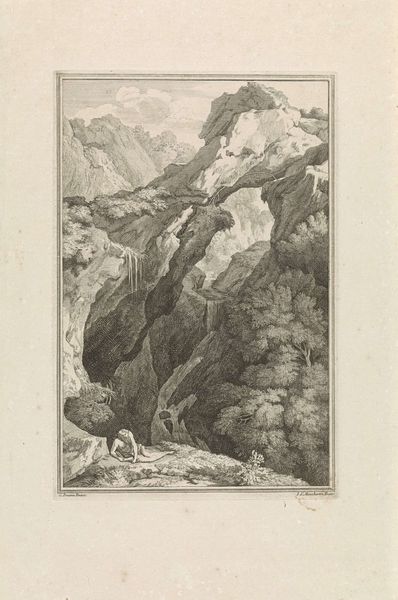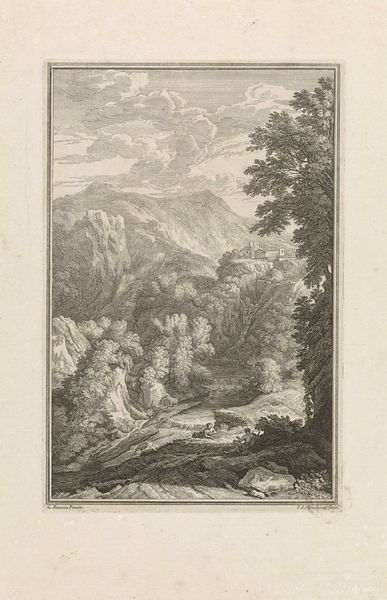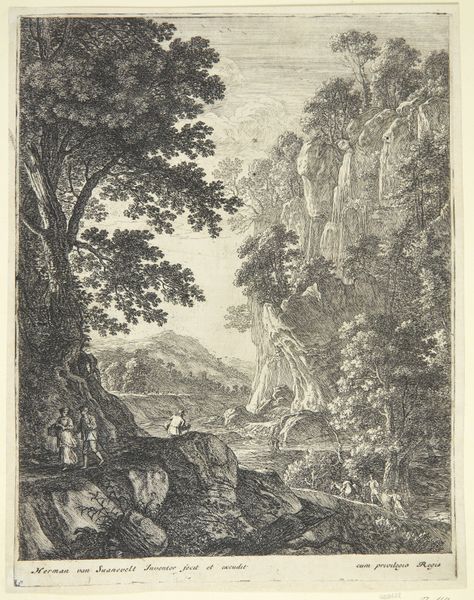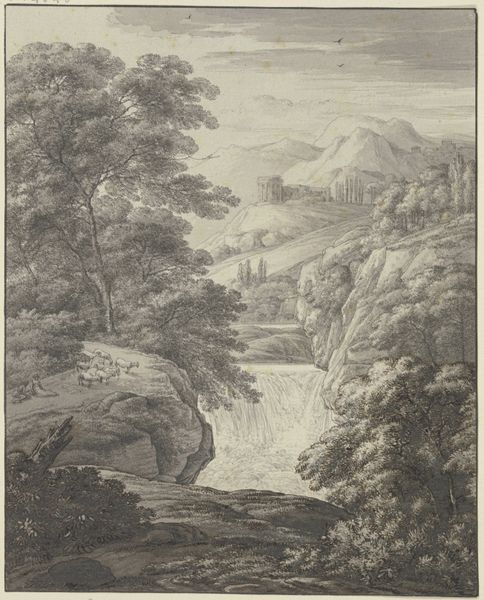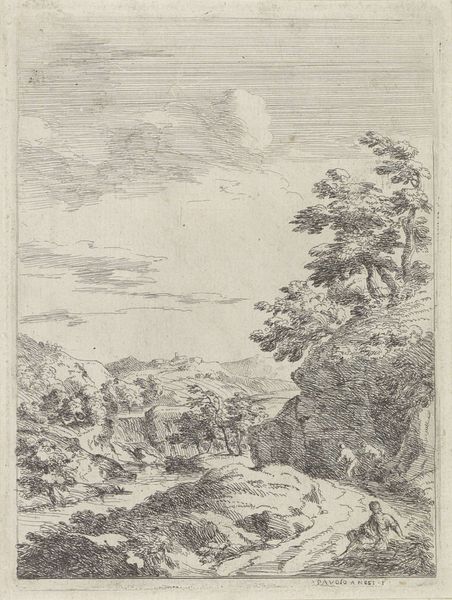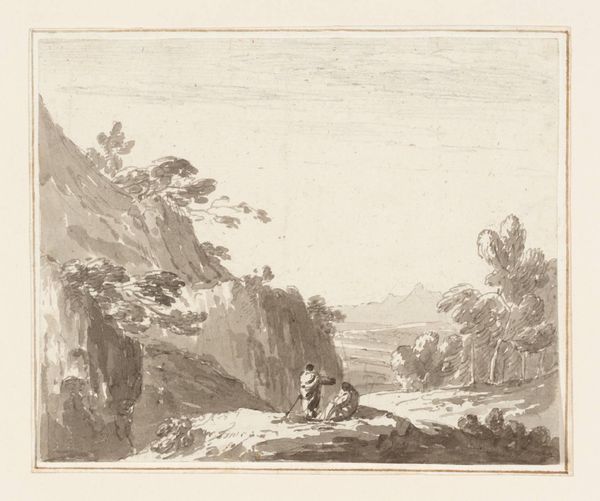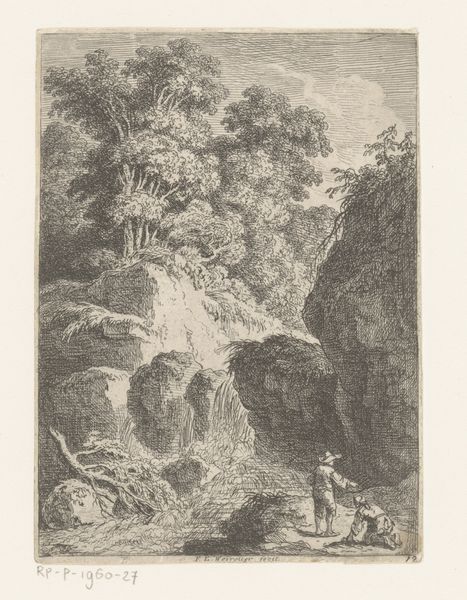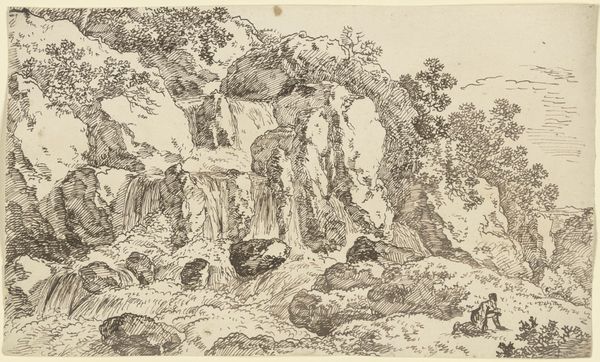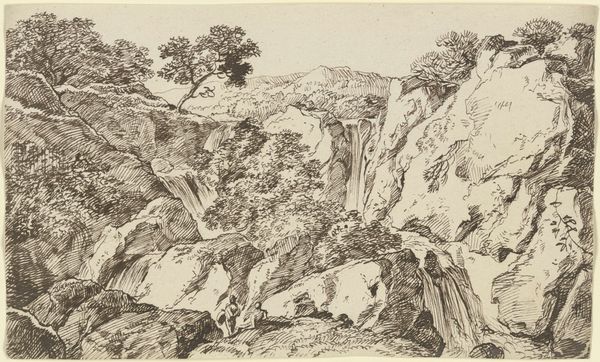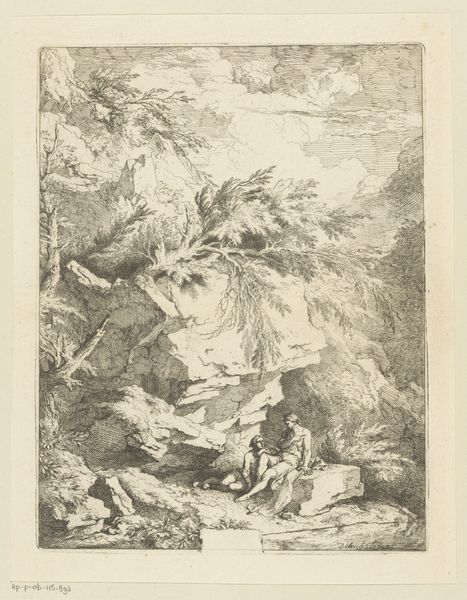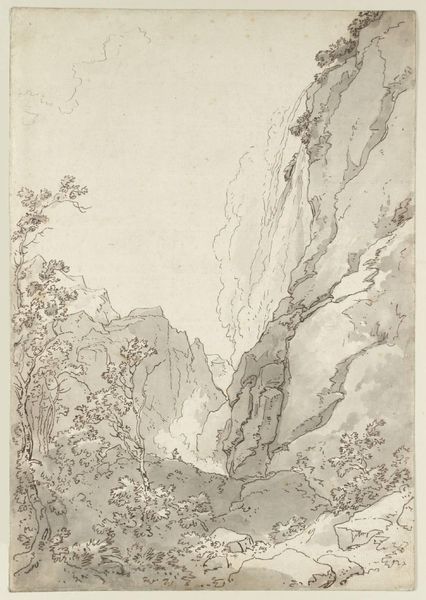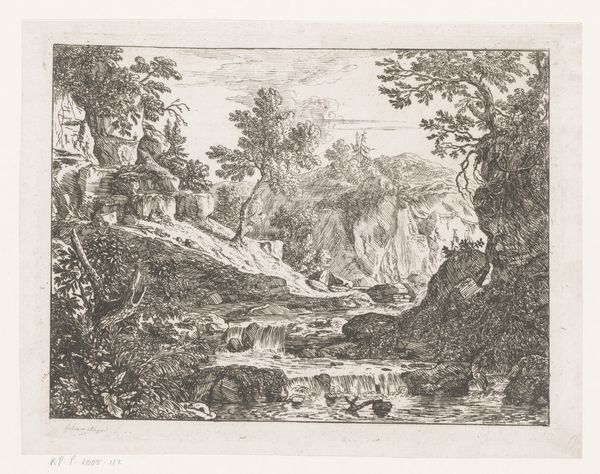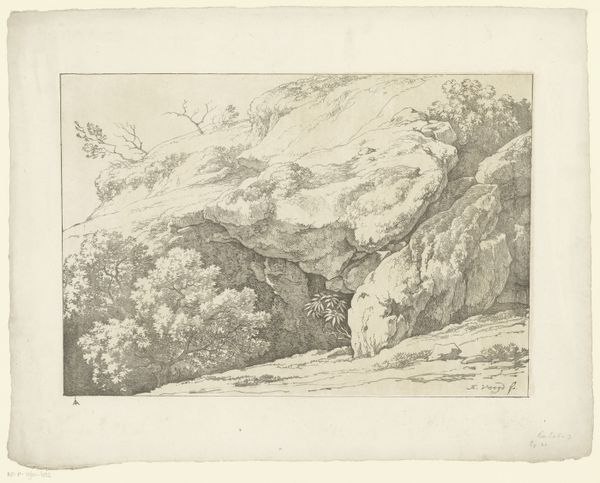
engraving
#
landscape
#
figuration
#
form
#
romanticism
#
mountain
#
line
#
engraving
Dimensions: height 202 mm, width 153 mm
Copyright: Rijks Museum: Open Domain
Curator: So, what are your initial impressions of "Berglandschap met twee figuren," a landscape attributed to Monogrammist JADV from 1791? It's rendered in engraving, with incredible detail. Editor: My immediate reaction is of drama and a slightly romanticised sense of wilderness. The high contrast in the engraving makes the scene feel quite intense. Curator: Absolutely, the linear work emphasizes the steep, rugged mountains, characteristic of Romanticism's interest in the sublime. I am fascinated by the composition—the figures are dwarfed, seemingly overwhelmed by the immensity of nature. Do they strike you as symbols of something beyond just human presence? Editor: For me, they represent the ongoing struggle between humans and their environment. I find it compelling to interpret these figures in a social context: their diminutive size emphasizing the precarity of labor, even as it romanticizes an age of exploration and discovery. The natural world seems to expose disparities between human actions and intentions. Curator: Interesting! I hadn't considered that reading. Perhaps the figures also underscore the artistic ideology of Romanticism, one marked by freedom from the formal restraint characteristic of earlier artistic movements. Editor: I appreciate your focus on freedom— I see that visual choice as linked to contemporary notions of emancipation. These images become associated with wider liberation movements as people began to challenge the constraints imposed by monarchy and church. Curator: I like how you connected Romanticism's visual style with emerging socio-political transformations! Editor: Thanks! The composition seems staged for dramatic impact to reveal those societal contradictions. In many ways the iconography seems rooted in revealing imbalance, particularly around power and progress. It seems more complex when considering who exactly could participate in art in this period. Curator: It certainly is rich with those contradictions. Thinking about the cultural memory embedded in images like this is essential—tracing how meanings shift yet stay tethered to the era that gave rise to them. It gives us space for re-imagining better worlds in our own moment. Editor: Exactly. Understanding art like this reveals the social and philosophical dimensions of our world, and this intersectional reading definitely feels imperative when engaging historical pieces!
Comments
No comments
Be the first to comment and join the conversation on the ultimate creative platform.
